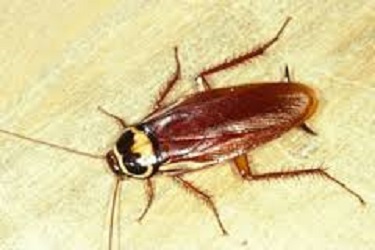
Palmetto Bugs A.K.A. The Flying Roach
The ‘palmetto bug’ is actually another name for the cockroach. But it’s not the shy, brown-colored little guy that scurries under your desk. Palmetto bugs live in the Deep South, from South Carolina to Louisiana. Palmetto bugs are significantly larger than their northern brethren, blacker in color, and bolder. They won’t hesitate to drop on your head or run across your toes. Also, Palmetto bugs can fly. They are also better armored than cockroaches.
They can carry germs such as salmonella, spike allergic reactions with their shed skin and droppings, or just horrify the invited household guests. An infestation doesn’t necessarily mean poor housekeeping. They show up for the same reasons you do: food, water and shelter. And it’s that time of year: As summer turns to fall, cockroaches turn to cover. American cockroaches (aka the Palmetto bug) definitely move indoors in the winter, or at least closer to structures.
How to Solve Your Palmetto Bug Problem
The best way to control palmetto bugs is to eliminate situations that would attract insects. This includes keeping kitchens, bathrooms and storage areas as clean as possible. Also, never leave food out overnight and regularly vacuum or sweep floors to remove any fallen food crumbs. Furthermore, seal cracks and holes round your home, repair damaged screens and install weather stripping around doors and windows. This will help prevent palmetto bugs from entering your home.
Boric Acid
Also known as orthoboric acid, boric acid contains boron, which is a naturally-occurring mineral with a low-toxicity that can be used to control a wide array of insects. Even though boric acid can pose a health risk if not properly used, it is still considered safer than other chemical insecticides. Boric acid was registered in 1983 to control various insects including ants, weevils, beetles and cockroaches, and is also used as a fungicide and fire retardant. When used as an insecticide, boric acid works acts as a stomach poison and abrasive material that cuts through the insects’ exoskeleton.
My Encounter with a Palmetto Bug
Once, while in New Orleans, I saw a cockroach on a kitchen counter. I think it saw me, too. I’m pretty sure of this, because the cockroach stood up on its back legs, making the terrifyingly large bug appear even bigger, and it hissed at me. I now know that Madagascar hissing cockroaches aren’t the only species of roaches that can audibly alert you to their discontent. Next, there was a kind of showdown. The cockroach spread its wings. It seemed to be gauging my reaction to determine if I would have the courage to confront it with the shoe I had taken off of my foot for the purpose of squashing it. Sensing that I was indeed planning on making a move, the cockroach leapt into the air with a flurry of beating wings and flew straight towards my face, sending me ducking for cover. The battle ended with me grabbing a can of Raid so I could kill the roach from a distance. I would have to say the Palmetto bug won that showdown. I now have PBTSD: Palmetto Bug Traumatic Stress Disorder.
Call Southern Pest Control so this don’t happen to you.
